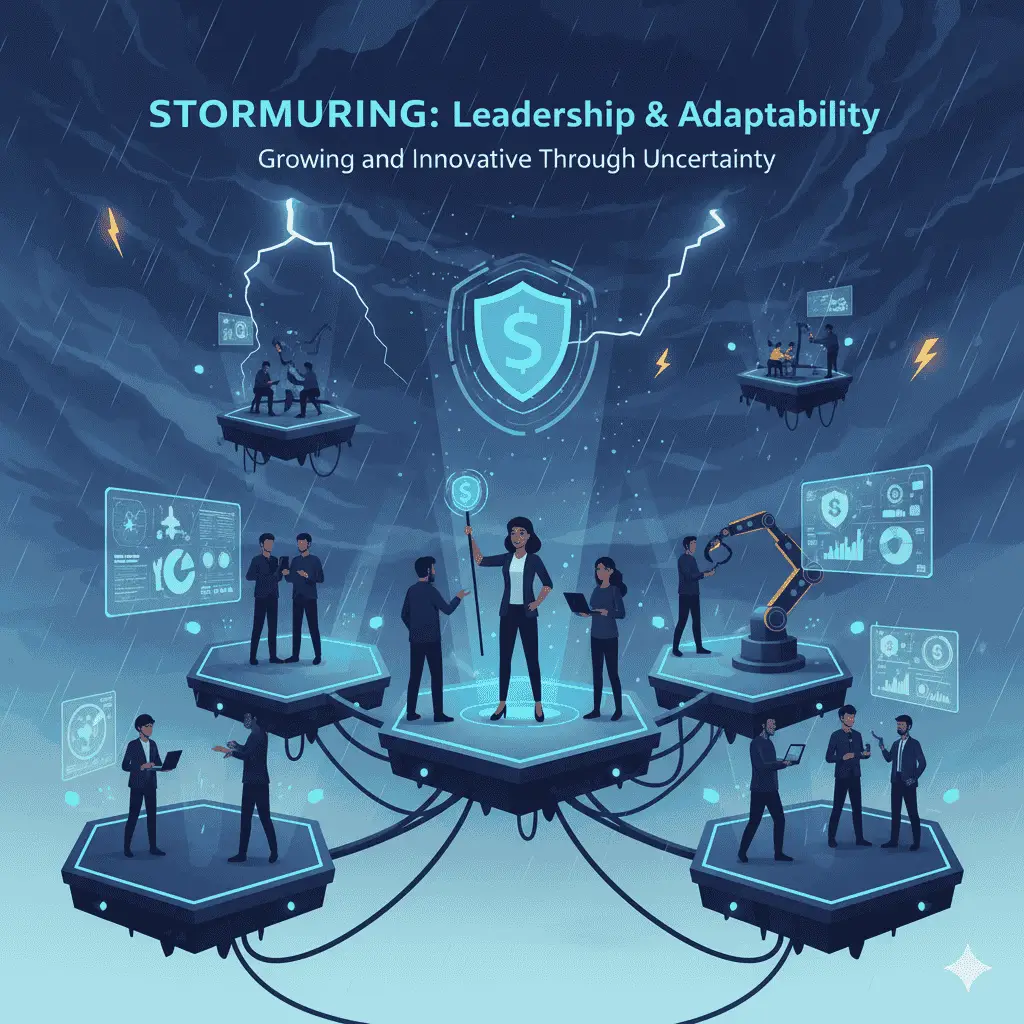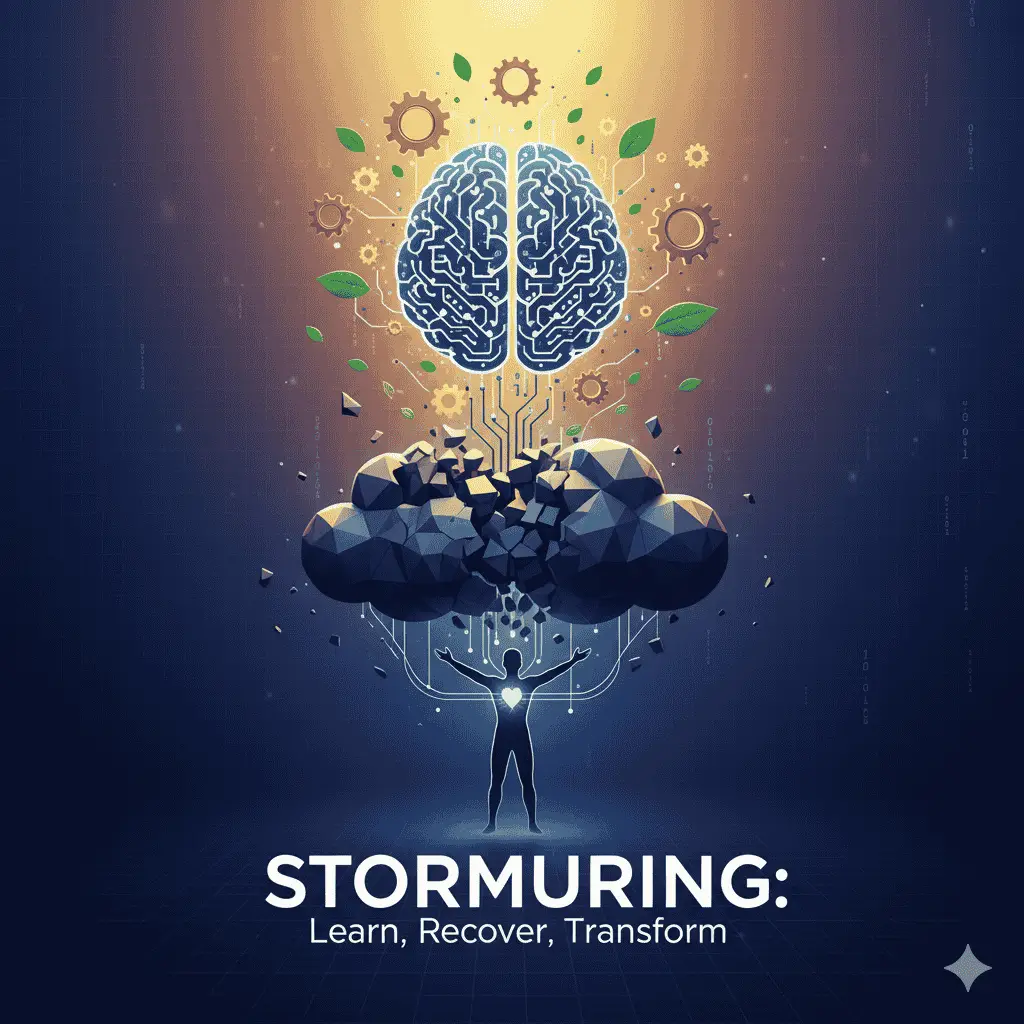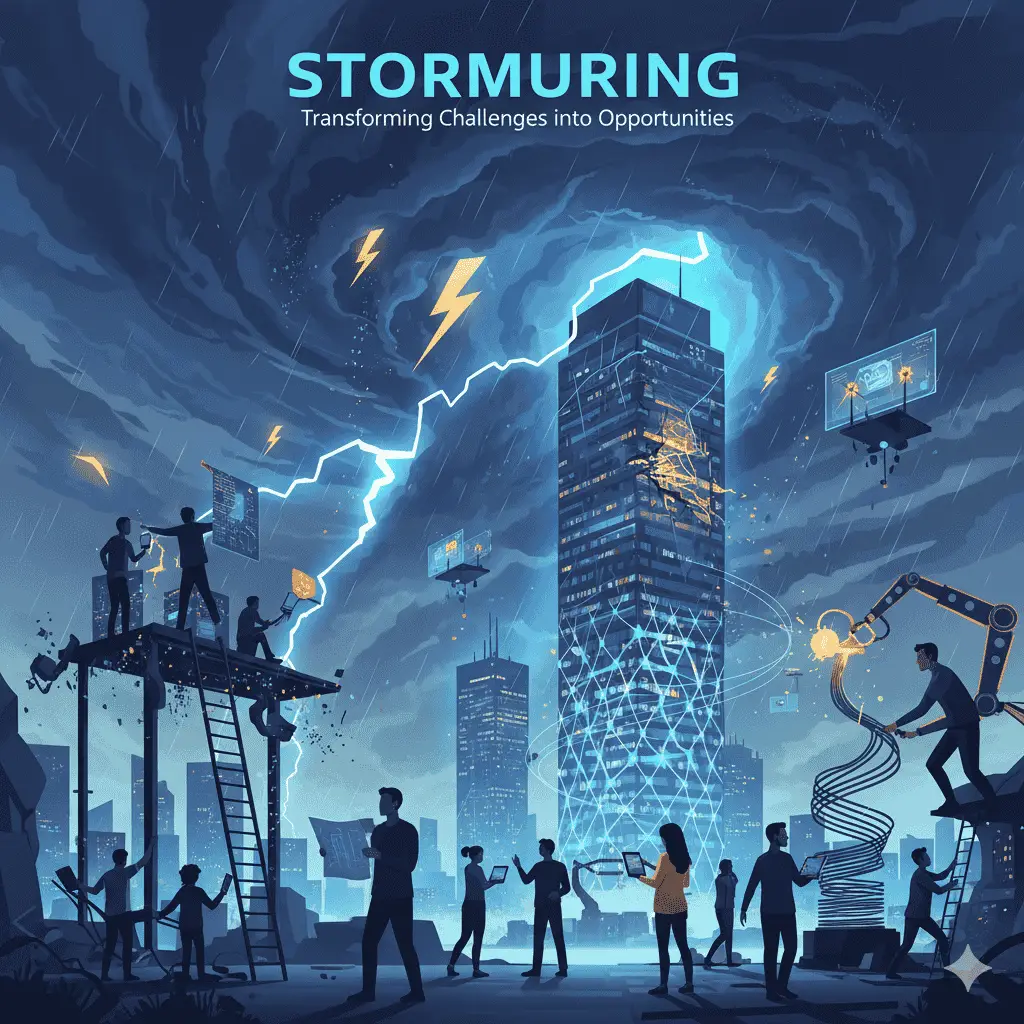Stormuring: Finding Your Feet When the Ground Keeps Shifting
You know that sensation—the one where your inbox pings with bad news, the stock chart goes south, or someone drops a personal bomb you didn’t see coming? One day the map makes sense; the next day the map’s gone. Plans look stupid. The future you pictured looks like fog.
Most of us treat those moments as interruptions. Temporary glitches. Roadblocks to be removed. But what if they’re not interruptions at all? What if they’re the whole point?
That’s the idea behind Stormuring. Not just surviving the storm—that’s resilience—but dancing in it. Planting a small garden in the rain. Seeing chaos and uncertainty not as enemies, but as raw material for growth, innovation, and real transformation.
I heard the word before I ever heard it named. A friend of mine ran a tiny bakery—a real neighborhood place; everyone knew the owner’s voice, and the bread smelled like Sunday mornings. Then lockdowns hit. Her shop went from full to empty in a weekend. Panic was normal. She had bills, suppliers, and rent. For a few days she sank into despair. Then she did something small and stubborn: she started sending out “soup-and-bread” packs to neighbors, added handwritten recipe cards, and ran a short video about how to make a basic loaf at home. That tiny pivot kept her afloat, and the community grew tighter around her little table. She didn’t just survive. She stormed.
Storming vs. Resilience—What’s the Difference?
Resilience is bouncing back. Storming is bouncing forward.
Resilience says, “I’ll recover and go back to how things were.” Stormuring says, “Okay, it’s different now—what can I build out of this difference?” It’s a subtle but powerful shift in mindset: from “restore the old” to “invent the new.” That’s where creativity, adaptability, and leadership meet.
You see storming in lots of places: the parent turning a messy divorce into new rituals that actually work, the teacher who rethinks grading to help students learn during turmoil, and the manager who says, “Screw the old KPIs—let’s design products that actually matter now.” It’s pragmatic optimism. It’s curiosity with teeth.
Small Moves, Big Impact
Storming doesn’t require heroic acts. It’s not a superhero cape. It’s small, messy actions that add up.
Redefine your anchor. When the external ground is shaky, anchor to values—not outcomes. If your core value is connection, find ways to connect even when the usual channels are gone. My baker’s anchor wasn’t the shop; it was the desire to feed and comfort people.
Start messy. Perfectionism loves calm. When the world shakes, perfection is a trap. Ship the shaky version. Try the half-baked campaign. Send the imperfect email. Momentum beats paralysis every time.
Hold the “and.” We’re trained to choose one: job or health, profit or purpose. Stormuring says “both/and.” “The company is pivoting, and this is your chance to try that idea you’ve been staring at.” Holding space for both the problem and a possibility is a radical move.
Leadership, Business, and Societal Change

Storming is a leadership playbook as much as a personal one. In business, leaders who panic and contract during a crisis usually make the crisis worse. Leaders who say, “Let’s experiment,” create cultures that turn challenges into innovation engines.
Look at history. Periods that outwardly felt chaotic—think the Renaissance after plagues and wars—ended up birthing huge cultural and technological shifts. That isn’t coincidence. Pressure breeds creativity. Constraint forces imagination. Societies that adapt, that teach education focused on curiosity and problem-solving rather than rote, reach the other side stronger.
This is crucial for the ;future. The digital age accelerates change; industries will continue to flip. The real advantage won’t belong to those who cling stubbornly to the old map, but to those who can read the currents and build new vessels.
Psychology and the Inner Work

There’s a psychological core to Stormuring. Our brains are wired for predictability. Chaos triggers fear. But the same brain that hunkers down can be trained to experiment. Small wins change wiring. Failure becomes data instead of identity.
Practical tip: reframe failure language. Replace “I failed” with “I learned X.” That’s not a feel-good trick; it’s cognitive reframing. It rewires the story you tell yourself and powers recovery and growth.
Storming in Everyday Life—Real Examples
A student failing an exam starts an unofficial study group online and ends up teaching peers while learning the subject deeply herself. Adaptability turned invisibility into leadership.
A mid-career employee, laid off during restructuring, uses redundancy severance to test a microbusiness idea. It fails—then pivots, becomes a steady side income, then primary. The storm created a runway.
A local theater troupe whose shows stopped suddenly offers online short plays recorded on phones. People who had never watched theater before tuned in. New audience. New revenue model. Innovation is born from constraints.
The Trap: Waiting for Calm
We wait. “I’ll start when the timing is right.” But timing rarely becomes right if you wait for perfect weather. Stormuring flips that script. The storm is the workshop. The constraints are creative prompts. When you wait for calm, you lose time, muscle, and the chance to build resilience into the system.
Final Thought: Make the Storm Your Teacher
Here’s the honest line: storms will keep coming. That’s life. You can live by avoidance, or you can learn the craft of moving through them. Storming isn’t about pretending everything is fine. It’s about choosing to do something purposeful inside the chaos—and trusting that the work you do in the middle of the storm shapes who you’ll be when it’s over.
So next time your phone pings with bad news, take a breath. Ask a Stormuring question: What can I build, learn, or become right now, in the middle of this?
Start small. Keep messy. Stay curious.
The storm isn’t the enemy—it’s the most effective teacher you’ll ever have.



